
On the Potential of Deep-Submergence Archaeology
January 2022 | Vol. 10.1
By Shelley Wachsmann
You are broken by the seas in the depths of the waters.
Ezekial 27:34
Ezekiel had it right. Ships do sink in deep water.
Common wisdom has ancient seafarers hugging shorelines for safety. In truth, coasts imperil watercraft to a far greater extent than does open water. Vessels could always be overwhelmed by sea conditions, but their chances of survival were more favorable in the open sea than when weather pushed them against a rapidly looming and unavoidable coastline. Ancient mariners, lacking motors and employing rigs lacking the maneuverability of modern sail systems, would have been well aware of this and would have acted accordingly when possible.

Map of documented Bronze Age sea routes in the eastern Mediterranean. Map: D. Davis.
Shore-based piracy also remained an ever-present threat throughout antiquity, supplying additional impetus for ships to avoid sailing too near the coast. Even on coastal routes prudent seafarers would have had good reason to avoid sailing near shore. Thus, many ancient routes crossed areas of open, and more specifically deep, water, well beyond normal diving depths. Cultural heritage in these benthic realms represent one of archaeology’s final frontiers: deep-submergence archaeology (DSA).
Willard Bascom, a marine geologist, first articulated the potential for archaeological exploration in deep waters. In 1976 Bascom published Deep Water, Ancient Ships (Garden City, Doubleday & Company, Inc.). There he lays out a convincing argument for the survival of shipwrecks of great archaeological and historical importance in the depths of the Mediterranean and Black Seas. In doing so, he culled the mid-19th shipping records of Lloyds of London. From this data, Bascom demonstrated that not only was it likely that deep-water shipwrecks had a better chance of surviving in good condition, on average, than vessels that went down in shallow waters, but that there would be many of them. A vessel sinking in deepwater would not have suffered harm from storms, waves, surges, strong currents or ancient salvors, all of which contribute to scrambling, loss of artifacts and the outright destruction of many shallower wrecks.

The typical vertical preservation of ancient wood-planked hulls in the Mediterranean Sea is seen in the Tantura B shipwreck, Israel, with only the lower parts of the structure surviving because of its burial in sediment soon after deposition. Early ninth-century AD. Photo: S. Wachsmann.
Of all the vessels recorded by Lloyds studied by Bascom, about half sank. Of those that sank, some 80 percent went down near a coast or coastal obstruction. An additional ten percent were lost in open water. The final ten percent simply vanished: when observed they were usually heading into inclement weather. Given the lack of subsequent evidence for the reasons or locations of their disappearance, Bascom surmised that the majority of these vessels also sank in blue water, raising the probable percentage of deep-water wrecks to 20 percent of all those lost. As Bascom notes, these statistics would have applied throughout antiquity.
In Mediterranean waters on average only about ten percent of a wooden-planked hull will survive overtime. Parts of a hull standing proud in the water column following the sinking event will succumb to waterlogging (the leaching out of water-soluble elements), wood-boring mollusks, bacteria and fungi. Eventually nothing organic will survive above the sediment. Thus, ancient ships reveal themselves normally by their inorganic cargoes, usually amphoras. In the Mediterranean region only the Black Sea, due to anoxic and toxic lower depths, allows for the survival of ancient ships’ timbers in the water column.
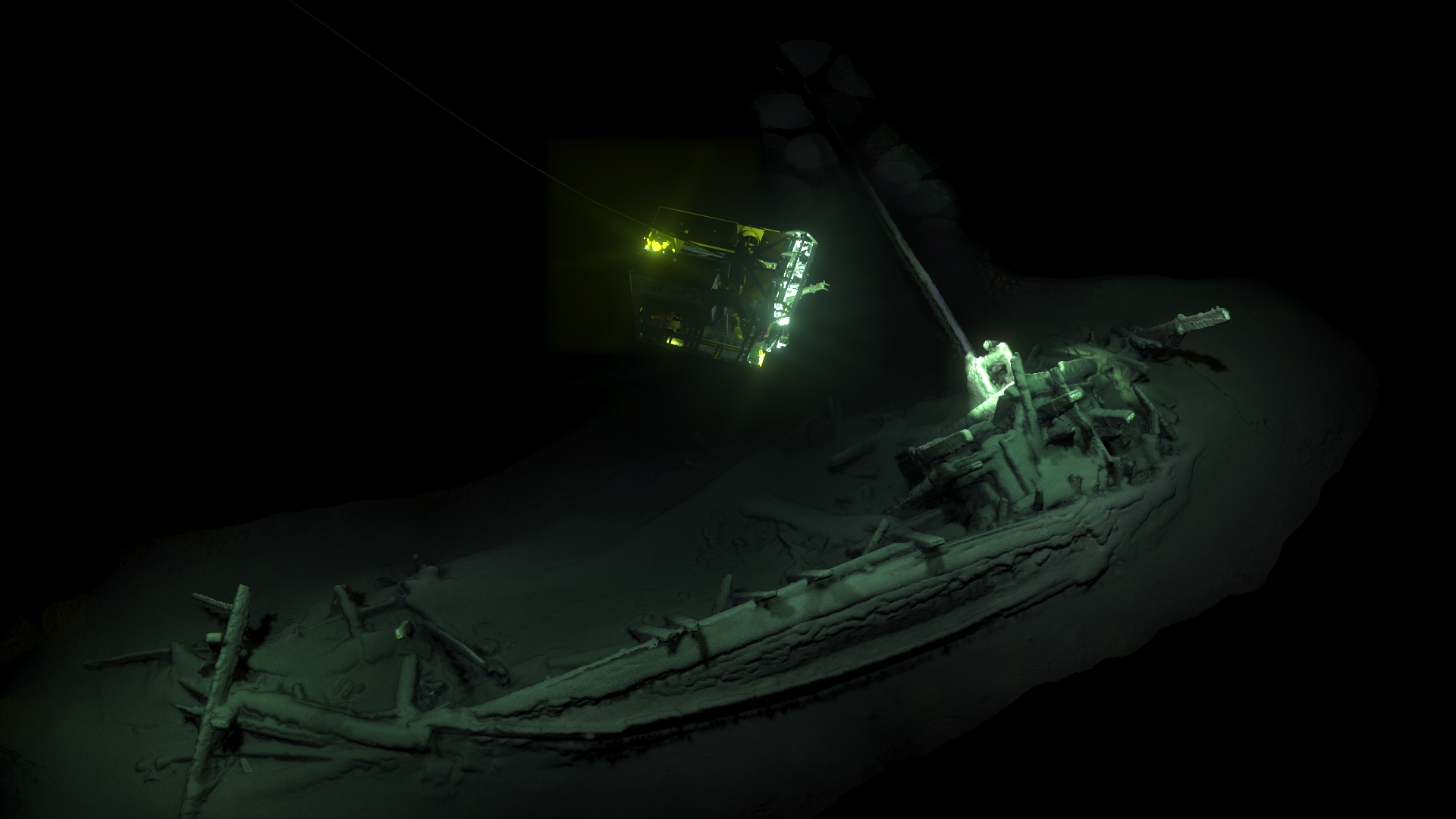
A remarkable discovery. A circa 2,400-year-old Greek galley lies on her side half buried in the s
ediment at a depth of over 2000 meters in the Black Sea off the Bulgarian coast. Unlike shipwrecks in the Mediterranean Sea, ships’ timbers survive in the water column in the lower reaches of the Black Sea. Galleys are rare in the Mediterranean archaeological record precisely because, bearing little or no contents, once their exposed timbers deteriorate, nothing protrudes above the sediment. The galley is among 60 shipwrecks
discovered in the Back Sea by the Maritime Archaeology Project (MAP). Courtesy MAP. Image: R. Pacheco-Ruiz.
Robert D. Ballard’s discovery of RMS Titanic in 1985 marked the beginning of DSA. Ballard’s subsequent work with archaeologist Anna-Marguerite McCann on a group of shipwrecks on Skerki Bank (1989, 1997), near Sicily, represented the first effort to study ancient deep-water shipwrecks. Since that time expeditions have been discovering vessels lost in deep water across the Seven Seas writ large, thus validating Bascom’s hypothesis. Additionally, when in distress, mariners ‘deep-sixed’ cargo and equipment to lighten the ship (Jonah 1:5; Acts 27:18). The archaeological evidence of such activity manifest as ‘amphora alleys’ on thes eabed.
During the successful 1999 search for the lost Israeli submarine NS Dakar by Nauticos Corporation, the first sonar target examined with an ROV was amid-first century BC shipwreck revealed by its enormous amphora pile, at a depth of over 3000 meters. (For perspective, the height of the Empire StateBuilding, including its spire, is 443 meters.) This video was taken during that single dive to the wreck. Note the free-standing lead stock of a wooden anchor (time stamp: 2 minutes). The wooden parts of the anchor long ago disappeared, but the stock still stands sentinel, more-or-less in its original position. The placement of the amphoras, some lying upside down, suggests that the ship, in addition to having amphoras stored in the hold, also had one or more decks loaded with amphoras that reached their current positions as the hull disintegrated. Note also the garbage brought to the wreck by under water currents (i.e., time stamp 1:41 minutes): this is, unfortunately, an all-too-common occurrence on ancient deep-water shipwrecks. Video by Nauticos.
At 110 meters, the seventh-century BCE Phoenician shipwreck discovered in Xlendi Bay, Gozo (Malta) is the deepest shipwreck excavated by divers using gas mixtures. Beyond diving depths all work locating, studying and test excavating must be carried out remotely. Nautical archaeologists use a variety of tools for these tasks, almost none of which were originally designed with nautical archaeology in mind. Primary search tools are side-scan sonar and multi beam (swath bathymetry), which create visual images of the seabed derived from acoustic signals. Submersibles with robotic arms can also be used to retrieve artifacts and carry out other archaeological jobs, but they are limited by their batteries and the needs of their human occupants.
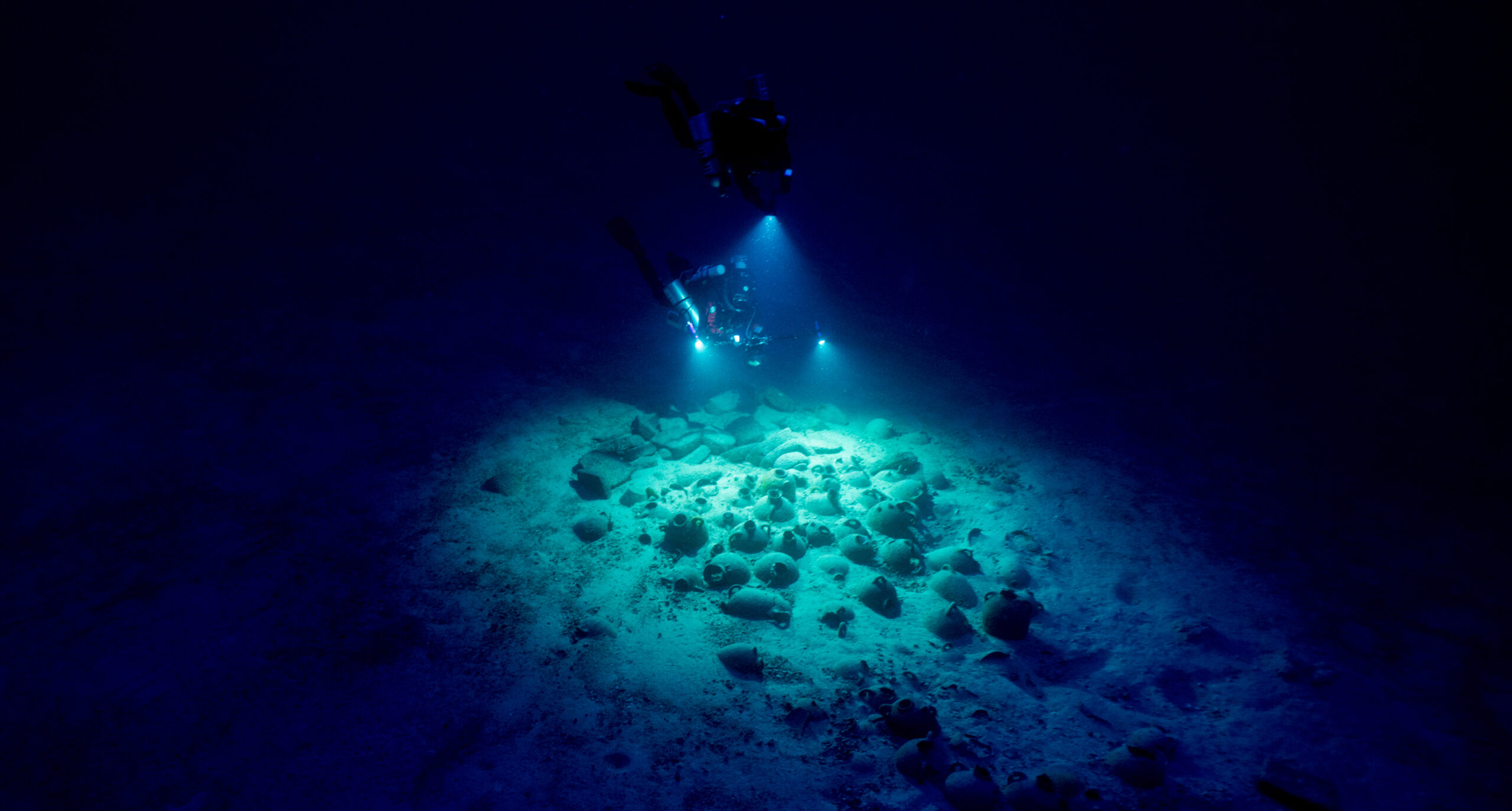
At 110 meters the Xlendi Bay Shipwreck, off Gozo (Malta), is the deepest underwater wreck to be excavated by divers. Photo courtesy T. Gambin
For actual work the remote-operated vehicle (ROV) remains the tool of choice. ROVs are unmanned robots that receive both power and telemetry via their tethers so that they can remain underwater for extended periods. Working-class ROVs require ships with dynamic positioning (DP), which allows the vessel to stay on station. Another important tool is the autonomous underwater vehicle (AUV), basically a smart robot that can be programmed to self-navigate and carry out surveying, mapping and other data-gathering missions. Due to battery power limitations AUVs are not appropriate for excavation, or handling, of artifacts.
While innovative tools have been developed to excavate limited sections of deep-water shipwrecks, the actual excavation of shipwrecks at depth remains in its infancy. The goal today in DSA remains primarily in discovering and documenting shipwrecks while developing tools for future excavation.
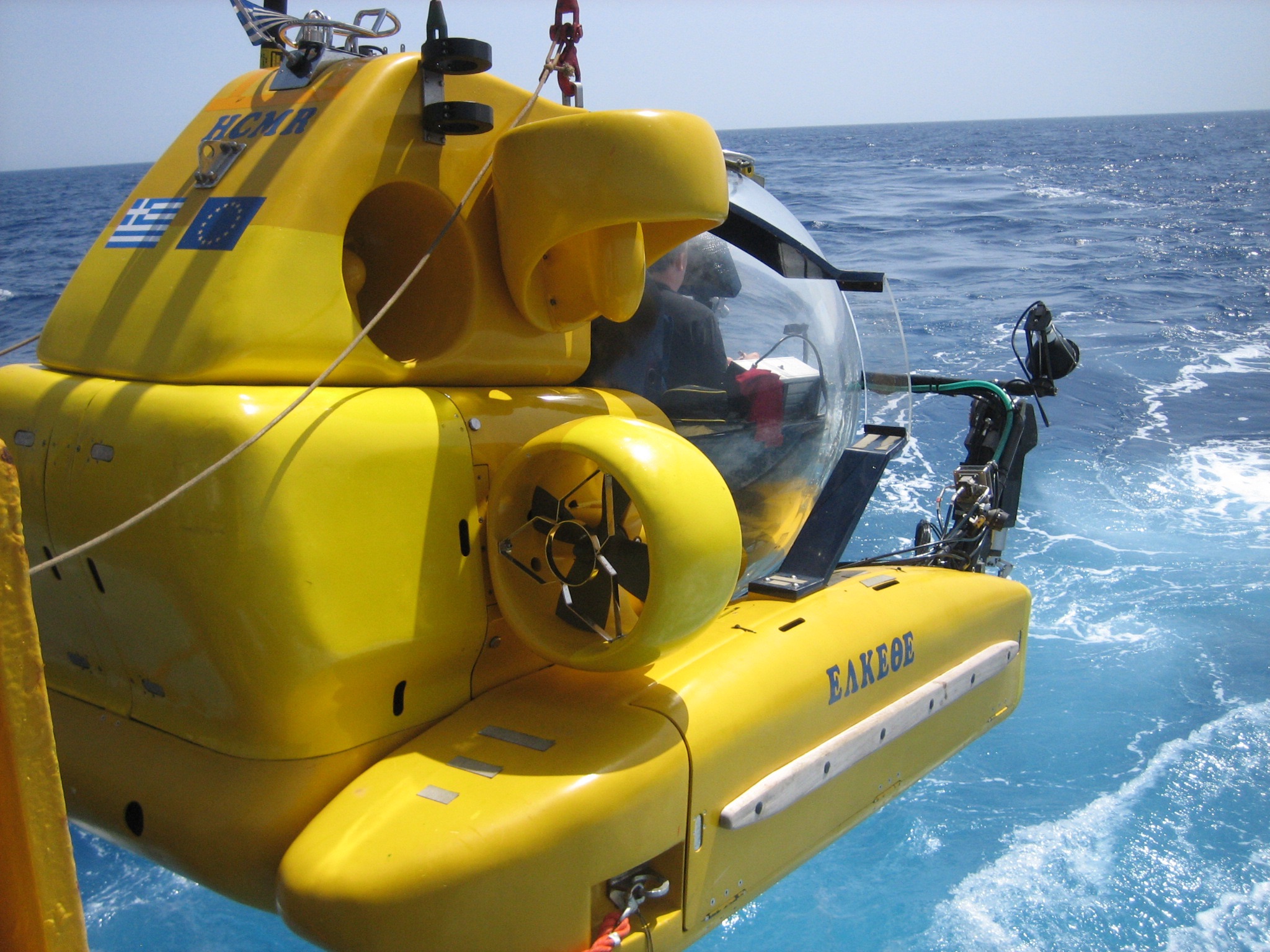
Submersibles are good platforms for some archaeological purposes but are limited by their batteries and by the needs of their human occupants. Diving inside the acrylic sphere of the Thetis submersible, owned and operated by the Hellenic Center for Marine Research (HCMR), was akin to sitting inside a fishbowl with the fish on the outside. Photo: S. Wachsmann.
A curious fact about DSA is that today shipwrecks are regularly found by industries (and the military) working in deep water. When laws apply, and sometimes even when not, industries contract with cultural resource management companies to locate and mark potential shipwreck sites for avoidance. This has the laudable goal of preventing harm to endangered sites.
The downside to this arrangement, however, is that knowledge of these anomalies, most of which are never even identified, remains proprietary, resulting in a real-life modern equivalent of the last scene in Raiders of the Lost Ark, in which (spoiler alert) the Ark is boxed up and carted off in a storage facility, presumably never to be seen again. These anomalies sadly remain in the realm of the unknown and the unknowable. In a perfect world some legal mechanism could be found to allow a ‘win-win’ situation in which both industry leaders and nautical archaeologists could find common ground and share these discoveries, with industry receiving rightful credit for their discoveries and the appropriate experts enabled to study and publish them.
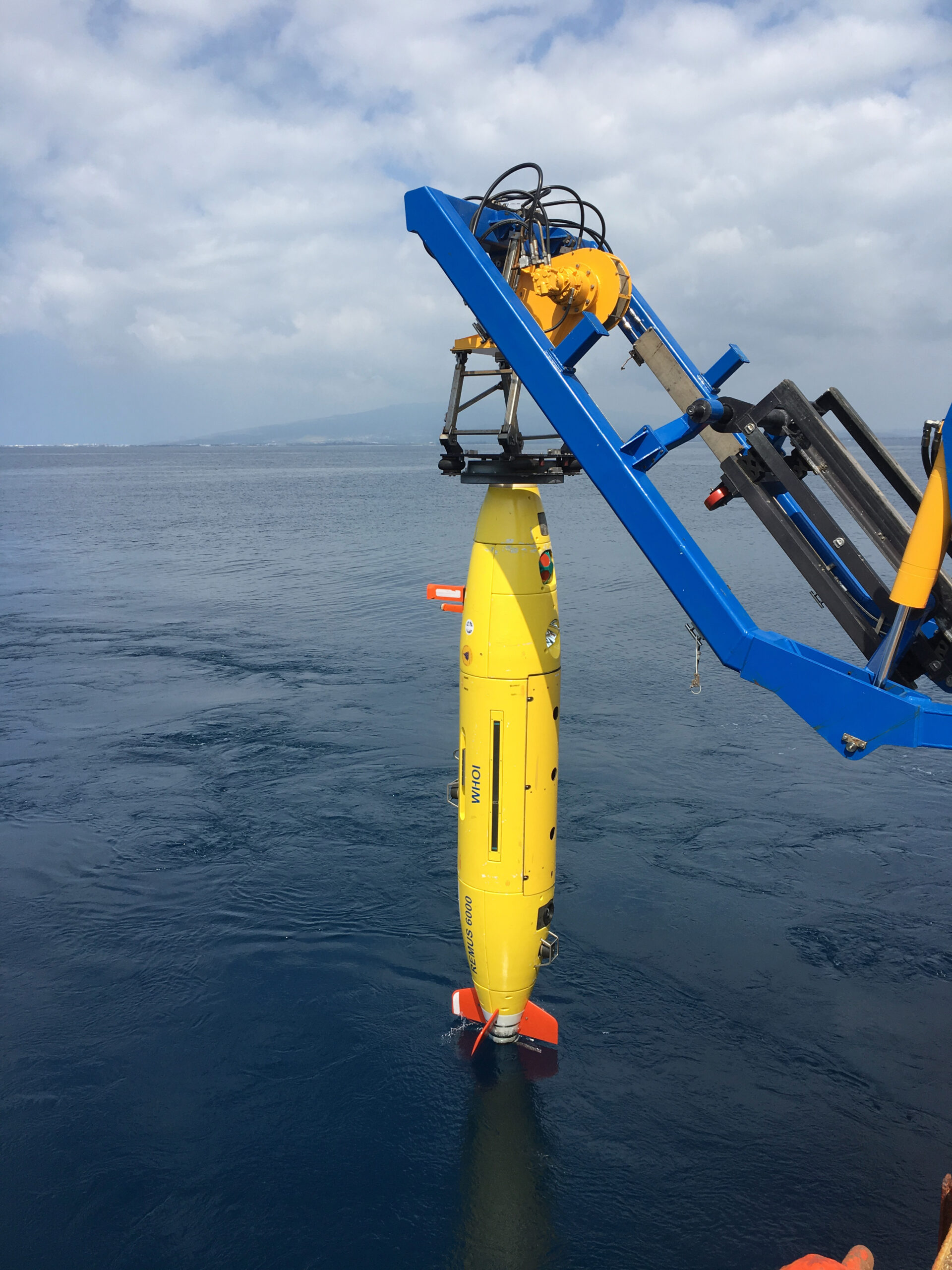
Autonomous underwater vehicles (AUVs) are becoming more robust and are particularly suited for carrying out extended deep-water archaeological surveys, as well as for documenting shipwrecks. Here Woods Hole Oceanographic Institution’s (WHOI) Remus 6000 is seen during a 2017 search for the Amelia Earhart’s Lockheed Electra airplane. Photo: J. Morris.
An example of such a symbiosis may be seen in the US Bureau of Ocean Energy Management (BOEM), which has partnered with the National Oceanographic and Atmospheric Administration (NOAA) to explore shipwrecks reported by the energy industry during Okeanos Explorer cruises. These voyages are broadcast live over the Internet using telepresence. These shipwrecks represent a miniscule percentage of those reported but this process sets an excellent precedent for further exploration.
While the scourge of treasure hunting rightly remains a major focus of archaeological concern, insufficient attention has been given to the damage caused worldwide everyday by trawlers ‘mowing the (benthic) lawn’ with heavily weighted nets dragged across the seabed, destroying everything in their wake. Trawling is an issue that should unite those concerned with marine sustainability as well as those interested in underwater cultural resource management. I had my own ‘come to Jesus’ moment regarding the devastation wrought by trawling in 2008, during a project I directed off Crete, when we came across a Rhodian amphora at over 600 meters depth that had been ‘rolled’ in the (relatively) recent past, as was clear from its pattern of marine growth.
A “rolled” amphora lying solitary on the seabed south of Crete at a depth of over 600 meters speaks eloquently of the devastating damage caused by trawlers worldwide. Image and Video: Danaos Project, 2008 Season.
DSA has tremendous potential to contribute to our understanding of the past. It is worth remembering, though, that a shipwreck should not be viewed as a ‘site’ but rather as an artifact, albeit a highly complex one, and that we still lack a comprehensive methodology for deep-water excavation. Until such time as that exists, developed perhaps in shallower waters from shore on ‘sacrificial’ wrecks, the study of vessels of high archeological and historical importance lying in deep-water that do not face imminent destruction should be carried out with innovative noninvasive technologies.
Shelley Wachsmann is the Meadows Professor of Biblical Archaeology at Texas A&M University and Chair of the Institute of Nautical Archaeology’s (INA) Archaeological Committee.
How to cite this article
Wachsmann, S. 2022. “On the Potential of Deep-Submergence Archaeology.” The Ancient Near East Today 10.1. Accessed at: https://anetoday.org/wachsmann-deepwater-archaeology/.
Want to learn more?
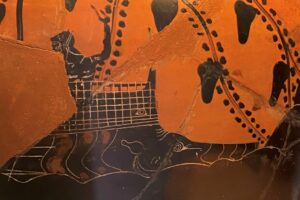
“Proto-Rams”: Piecing Together the Early History of Naval Ram Development
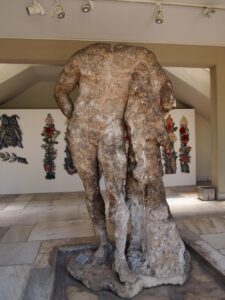
The Maritime Transport of Sculptures in the Ancient Mediterranean


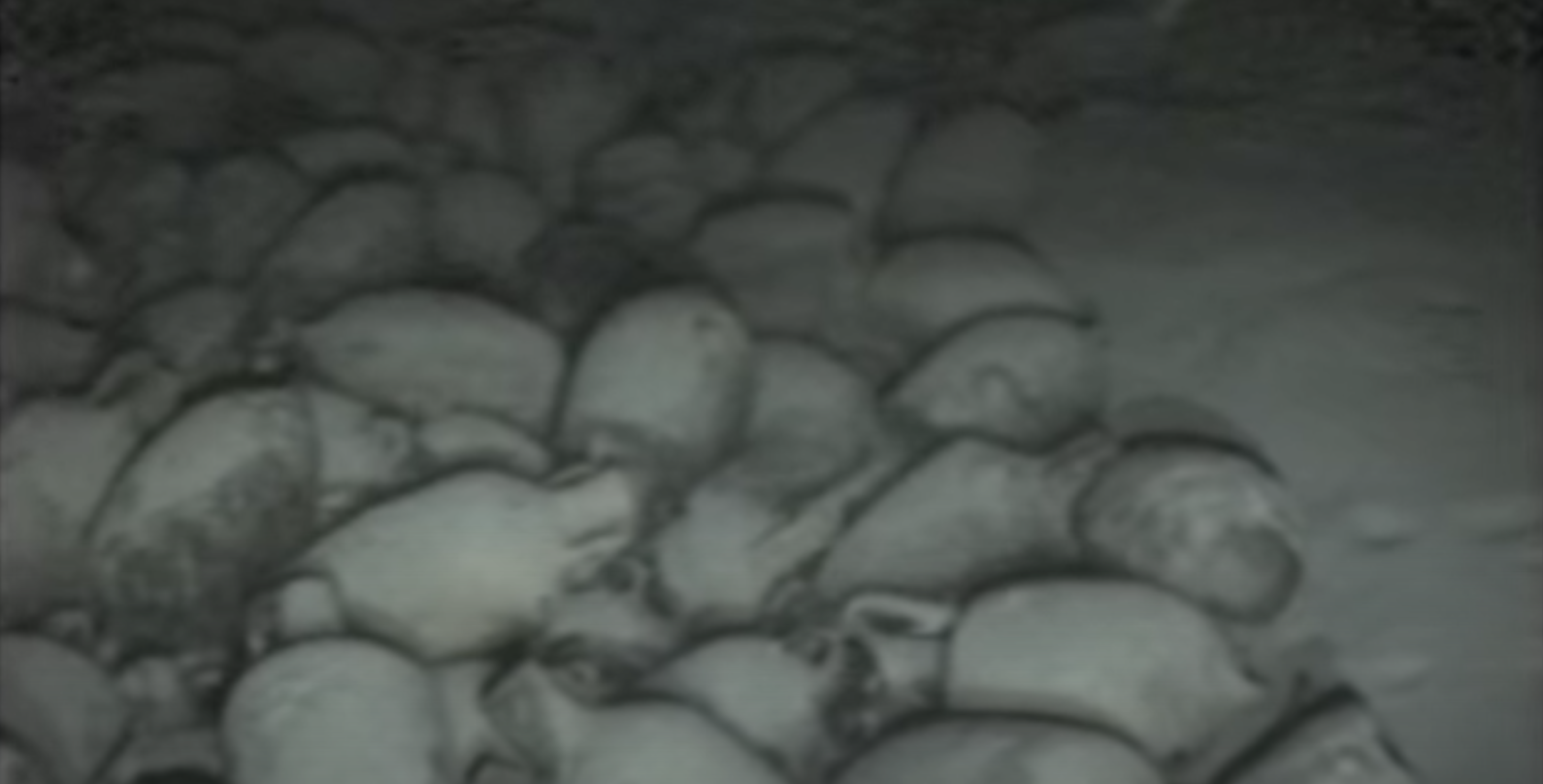

Post a comment